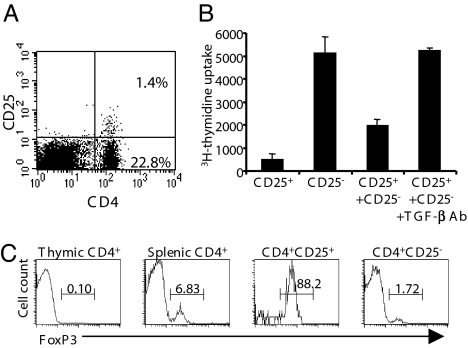Fig. 7.
Treatment of NOD CD28−/− mice with anti-CD3 antibody restores the number and the suppressive capacities of the CD4+CD25+ T cells. Diabetic NOD CD28−/− mice treated for 5 d with CD3-specific F(ab′)2 fragments enter long-term remission. (A) Expression of CD25 in the CD4+ T cell subset recovered from the spleen of NOD CD28−/− mice 3 weeks after the end of the treatment. (B) Analysis of the suppressive capacities of the CD4+CD25+ T cells from treated NOD CD28−/− mice on the anti-CD3-induced proliferation of CD4+CD25− T cells in the presence or absence of anti-TGF-β antibody. (C) Intracellular staining of foxP3 protein expressed by various T cell subsets isolated from the spleen or the thymus of treated NOD CD28−/− mice.

